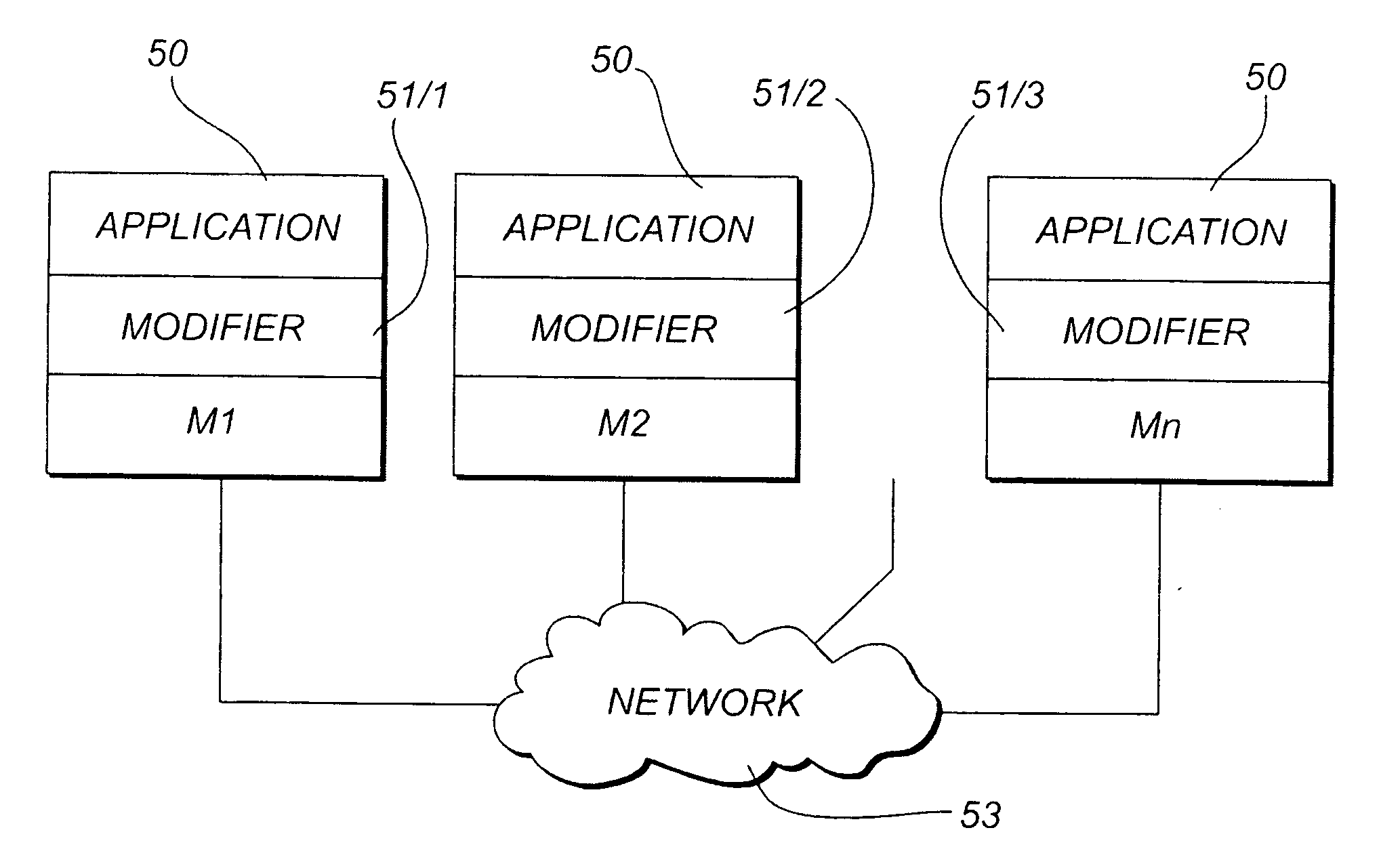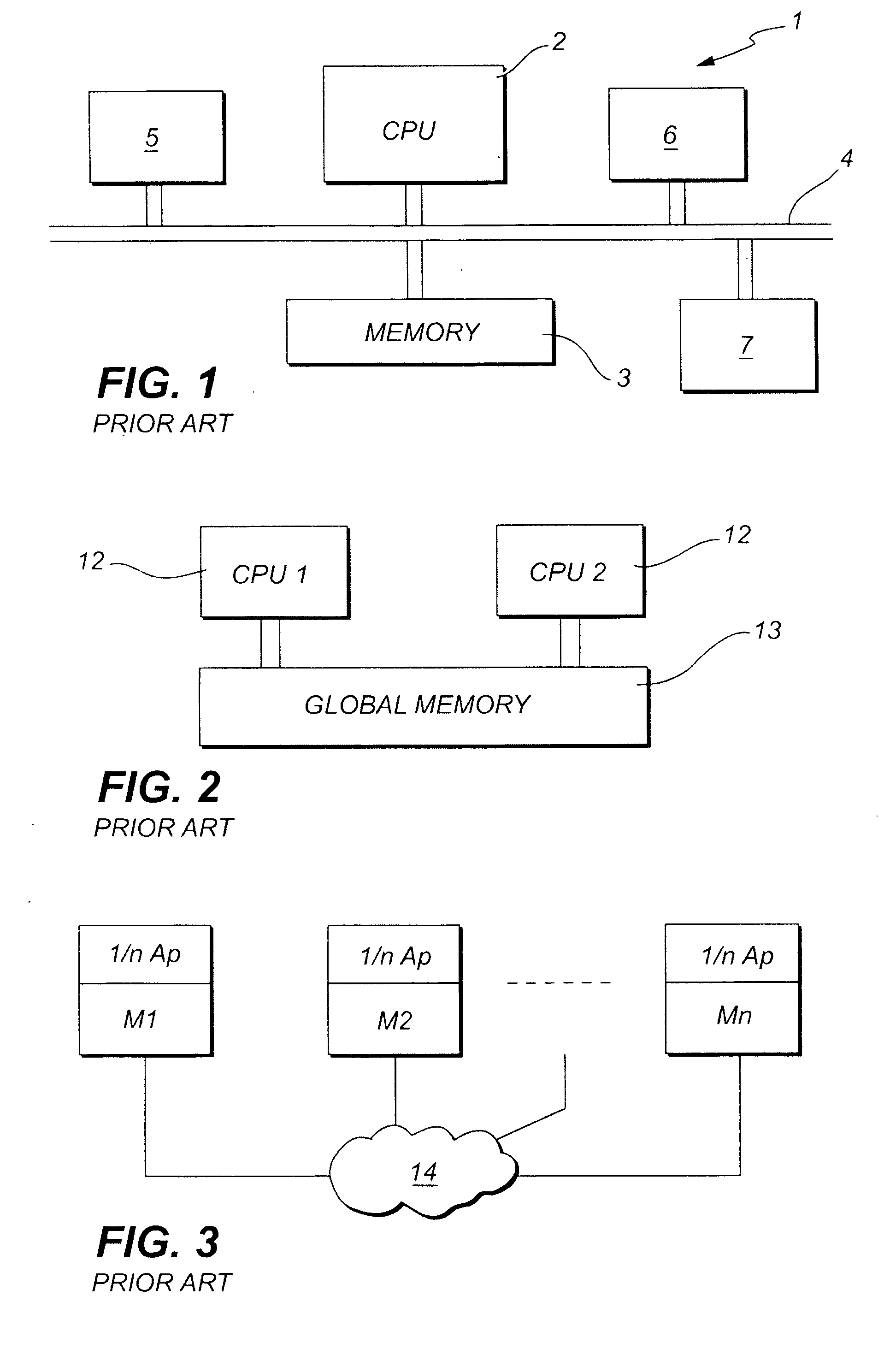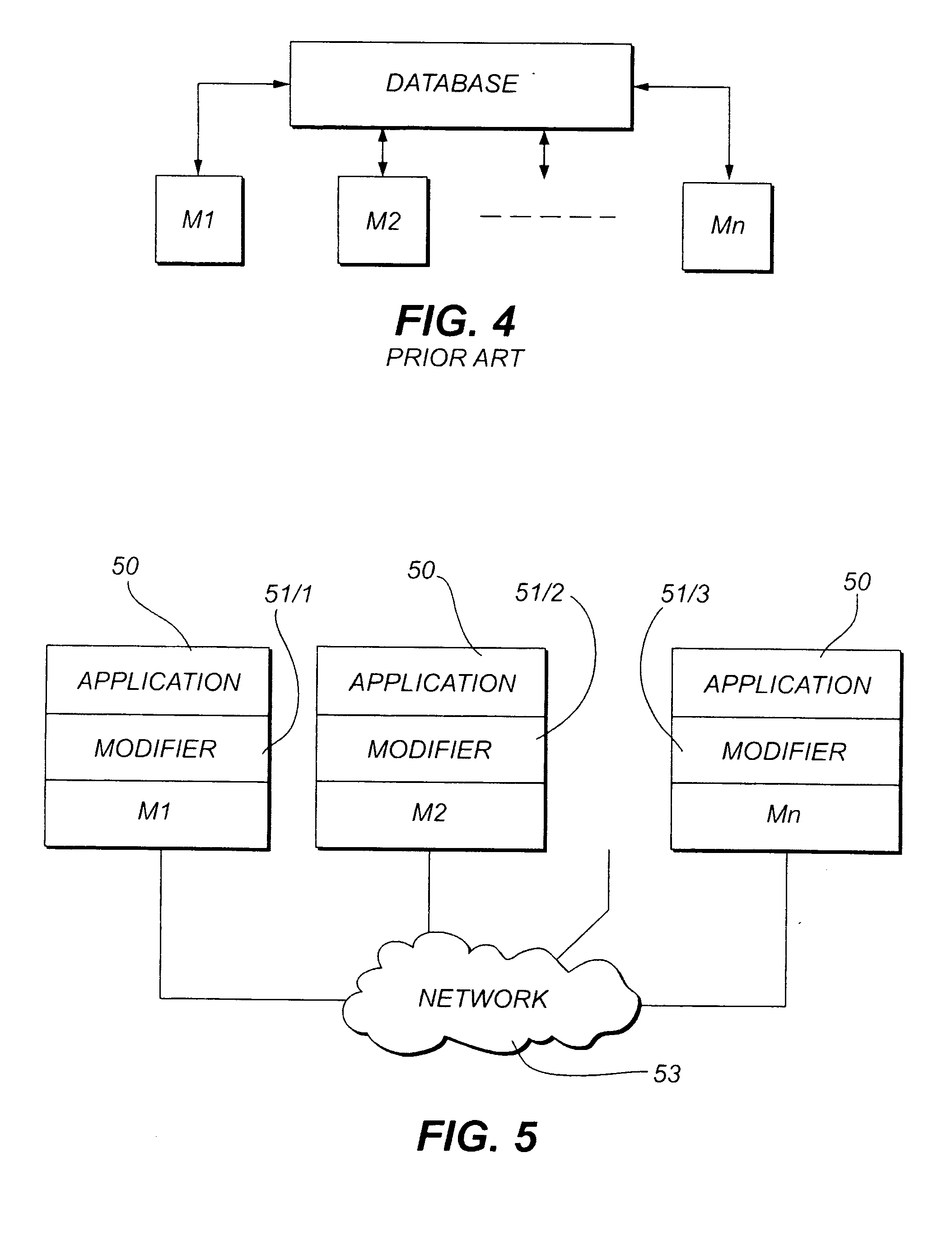Computer architecture and method of operation for multi-computer distributed processing and coordinated memory and asset handling
a distributed processing and multi-computer technology, applied in the field of computer architecture and multi-computer distributed processing, coordinated memory and asset handling, can solve the problems of inability to scale over “commodity” (or mass produced) computers and networks, invariably increasing the administrative overhead of machines, and extremely expensive not only to manufacture but to administer single system image concepts
- Summary
- Abstract
- Description
- Claims
- Application Information
AI Technical Summary
Benefits of technology
Problems solved by technology
Method used
Image
Examples
Embodiment Construction
[0105] The present invention discloses a modified computer architecture which enables an applications program to be run simultaneously on a plurality of computers in a manner that overcomes the limitations of the aforedescribed conventional architectures, systems, methods, and computer programs.
[0106] In one aspect, shared memory at each computer may be updated with amendments and / or overwrites so that all memory read requests are satisfied locally. Before, during or after program loading, but before execution of relevant portions of the program code are executed, or similar, instructions which result in memory being re-written or manipulated are identified. Additional instructions are inserted into the program code (or other modification made) to cause the equivalent memory locations at all computers to be updated. While the invention is not limited to JAVA language or virtual machines, exemplary embodiments are described relative to the JAVA language and standards. In another asp...
PUM
 Login to View More
Login to View More Abstract
Description
Claims
Application Information
 Login to View More
Login to View More - R&D
- Intellectual Property
- Life Sciences
- Materials
- Tech Scout
- Unparalleled Data Quality
- Higher Quality Content
- 60% Fewer Hallucinations
Browse by: Latest US Patents, China's latest patents, Technical Efficacy Thesaurus, Application Domain, Technology Topic, Popular Technical Reports.
© 2025 PatSnap. All rights reserved.Legal|Privacy policy|Modern Slavery Act Transparency Statement|Sitemap|About US| Contact US: help@patsnap.com



